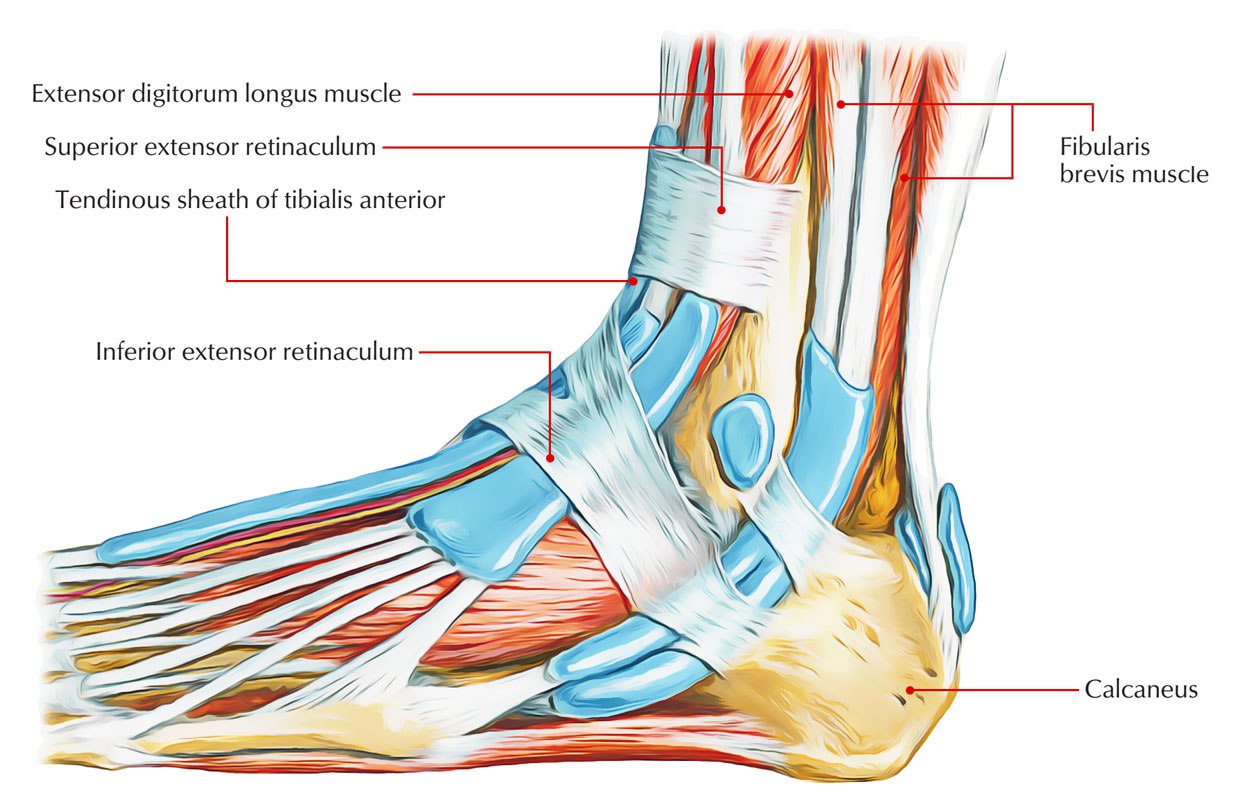Medial Retinaculum Anatomy and Structure
The medial retinaculum is a fibrous band that stretches across the anterior aspect of the wrist, forming the medial border of the carpal tunnel. It originates from the pisiform bone and triquetrum proximally and inserts distally onto the hook of the hamate and the base of the fifth metacarpal. The retinacular fibers are arranged in a complex manner, with superficial and deep layers. The superficial layer is continuous with the palmar aponeurosis, while the deep layer is attached to the transverse carpal ligament.
Surrounding Structures
The medial retinaculum is closely related to several important structures in the wrist. These include:
– The flexor carpi radialis tendon, which runs along the radial border of the retinaculum.
– The median nerve, which passes through the carpal tunnel beneath the retinaculum.
– The ulnar artery and veins, which also pass through the carpal tunnel.
Function and Biomechanics of Medial Retinaculum

The medial retinaculum, a tough band of connective tissue, plays a pivotal role in supporting the wrist joint and facilitating the smooth gliding of flexor tendons. It acts as a protective sheath, safeguarding the underlying structures from external forces and ensuring their proper function.
Support for Wrist Joint
The medial retinaculum contributes significantly to the structural stability of the wrist joint. It provides a firm attachment for the carpal bones, preventing excessive movement and ensuring proper alignment during various hand and wrist activities. By limiting excessive motion, the retinaculum helps prevent potential dislocations or subluxations of the carpal bones.
Flexor Tendon Gliding
The medial retinaculum plays a crucial role in the gliding of flexor tendons, which are responsible for flexing the fingers and wrist. The smooth lining of the retinaculum creates a low-friction environment, allowing the tendons to move effortlessly during hand and wrist movements. This gliding action is essential for precise and coordinated hand and finger function.
Biomechanical Properties
The medial retinaculum exhibits remarkable biomechanical properties that enable it to withstand the demands of various hand and wrist activities. It is composed of dense connective tissue, primarily collagen fibers, arranged in a parallel orientation. This structural organization provides the retinaculum with high tensile strength and elasticity, allowing it to resist stretching and deformation under load.
Clinical Significance of Medial Retinaculum

The medial retinaculum is a crucial structure in the wrist that forms the roof of the carpal tunnel. Its clinical significance lies in its role in the development of carpal tunnel syndrome, a common condition that affects the median nerve and tendons in the carpal tunnel.
Symptoms and Presentation of Carpal Tunnel Syndrome, Medial retinaculum
Carpal tunnel syndrome is characterized by pain, numbness, and tingling in the thumb, index, middle, and ring fingers. These symptoms typically worsen at night or with activities that involve repetitive hand movements, such as typing or gripping objects. In severe cases, weakness in the hand and difficulty with fine motor skills can also occur.
Role of Medial Retinaculum in Carpal Tunnel Syndrome
The medial retinaculum plays a significant role in the development of carpal tunnel syndrome. When the retinaculum becomes thickened or tight due to factors such as repetitive hand use, trauma, or fluid retention, it can compress the median nerve and tendons within the carpal tunnel. This compression leads to inflammation, nerve damage, and the characteristic symptoms of carpal tunnel syndrome.
Treatment Options for Carpal Tunnel Syndrome
Treatment options for carpal tunnel syndrome depend on the severity of the condition. Non-surgical treatments, such as splinting, corticosteroid injections, and activity modification, can help relieve symptoms in mild cases. In severe cases, surgical intervention may be necessary to release the pressure on the median nerve by dividing the medial retinaculum.
The medial retinaculum, a ligament in the wrist, stabilizes the carpal bones. Its role is similar to that of a mavericks owner , who provides stability and guidance to their team. The medial retinaculum ensures proper wrist function, just as a mavericks owner steers their franchise towards success.
The medial retinaculum, a ligament located in the wrist, plays a crucial role in stabilizing the carpal bones. Its significance extends beyond the realm of anatomy; it weaves a connection to the world of entertainment, where Theresa Randle’s portrayal in Bad Boys 4 captivates audiences with her fierce determination.
Just as the medial retinaculum anchors the wrist, Randle’s character anchors the film’s plot, showcasing the power of resilience and the indomitable spirit that resides within us all.
Like the delicate interplay of the medial retinaculum, which stabilizes the tendons in our wrists, the “miriam adelson mavs” ( miriam adelson mavs ) are a testament to the power of collaboration. Just as the retinaculum ensures smooth movement, so too does this alliance foster innovation and progress in various fields, shaping the very fabric of our society.
The medial retinaculum, a fibrous band that stabilizes tendons in the wrist, reminds us of the importance of structure. Just as a stock split, like the recent chipotle stock split , can bring stability to a company’s valuation, the medial retinaculum ensures stability in the wrist’s delicate mechanics, allowing for seamless hand movements.
Like a watchful sentinel, the medial retinaculum stands guard over the carpal tunnel, a narrow passageway for nerves and tendons in our wrists. Its role in safeguarding these delicate structures echoes the vigilance of Steve Ballmer , the former CEO of Microsoft, who tirelessly championed innovation and customer satisfaction.
Just as the medial retinaculum ensures the smooth functioning of the wrist, Ballmer’s leadership fostered a culture of technological advancements that continue to shape our digital landscape.
